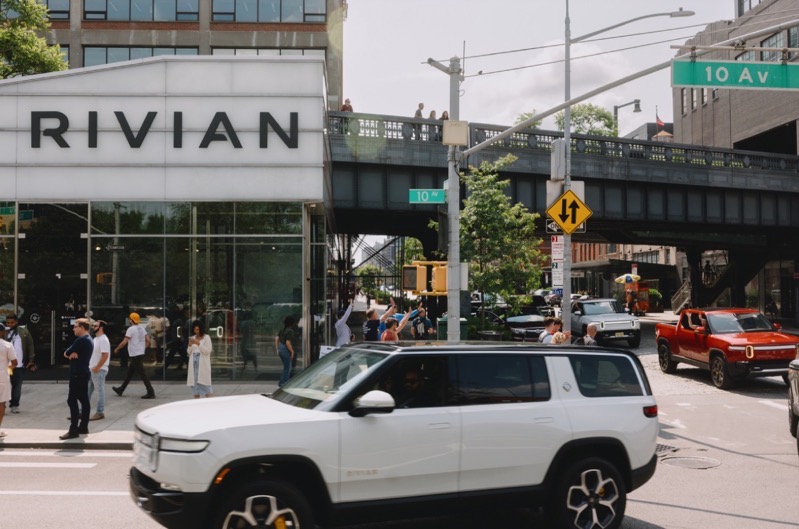
Rivian Q3 Sees Net Loss of $1.36 Billion, But Production is Up

In the third quarter of 2023, Rivian reported significant advancements in its production capabilities and financial performance, marking its strongest quarterly production rate to date with over 65,000 units annually.
The company’s financial results have positively reflected these improvements, with a notable increase in production guidance to 54,000 units for the year.
The EV manufacturer has made strides in cost efficiency, with a company-wide transformation program initiated in 2022 that has led to a sequential improvement in gross profit per unit. The third quarter saw a $2,000 increase in gross profit per unit compared to the second quarter, despite fewer inventory write-downs and losses on purchase commitments.
Rivian’s focus on new technologies has borne fruit with the production launch of the R1 Max pack variants, boasting an EPA-estimated range of up to 410 miles. Regular over-the-air updates have been enhancing vehicle capabilities, driving customer engagement with improvements in ride quality and towing experience.
The customer experience remains a priority for Rivian, as evidenced by the expansion of its service network and Rivian spaces, with new locations opened across various cities. The company’s DC fast charging network has also grown, now featuring 57 Rivian Adventure Network sites.
In terms of deliveries, Rivian produced 16,304 vehicles and delivered 15,564 in the third quarter. The R1S model constituted the majority of the R1 production.
As for revenue, it reached $1.33 billion in the quarter. Despite the revenue, Rivian reported a negative gross profit of $(477) million, an improvement from $(917) million in the third quarter of the previous year.
The improvement in gross profit is credited to increased production and material cost reductions achieved through commercial negotiations and design changes. However, the quarter was affected by a charge for lower of cost or net realizable value (LCNRV) write-downs on inventory and losses on firm purchase commitments, totaling $452 million.
Rivian anticipates a decrease in LCNRV write-downs and losses on purchase commitments over time, which is expected to contribute to higher net inventory balances and lower cost of revenues per vehicle. The company forecasts a positive gross profit by 2024, with no significant LCNRV inventory charges projected by the end of that year.
Operating expenses for the quarter rose to $963 million, up from $857 million in the same quarter the previous year. This includes a non-cash, stock-based compensation expense of $219 million and an increase in research and development costs to $529 million, driven by investments in future technologies and related projects.
The company’s selling, general, and administrative expenses also increased to $434 million, primarily due to higher payroll expenses from increased headcount and other operational expenses.
Rivian’s loss from operations for the quarter was $(1,440) million, an improvement from $(1,774) million year-over-year. The net loss was reported at $(1,367) million, compared to $(1,724) million for the same period last year. Adjusted EBITDA was $(942) million, showing a reduction in losses from $(1,307) million in the previous year.
Net cash used in operating activities was $(877) million, and capital expenditures were $(190) million, both showing a decrease from the prior year’s figures, reflecting the company’s early-stage production ramp-up costs.
Expanding its commercial reach, Rivian has opened up its Rivian Commercial Van for purchase by other companies, aiming to facilitate the electrification of delivery fleets globally and contribute to CO2 emissions reduction.
Amazon continues to partner with Rivian, integrating over 10,000 Rivian electric delivery vehicles into its fleet, which have delivered over 260 million packages across the U.S. and initiated deployments in Germany. This collaboration is on track to bring 100,000 electric delivery vehicles to the road, significantly impacting Amazon’s carbon footprint.

